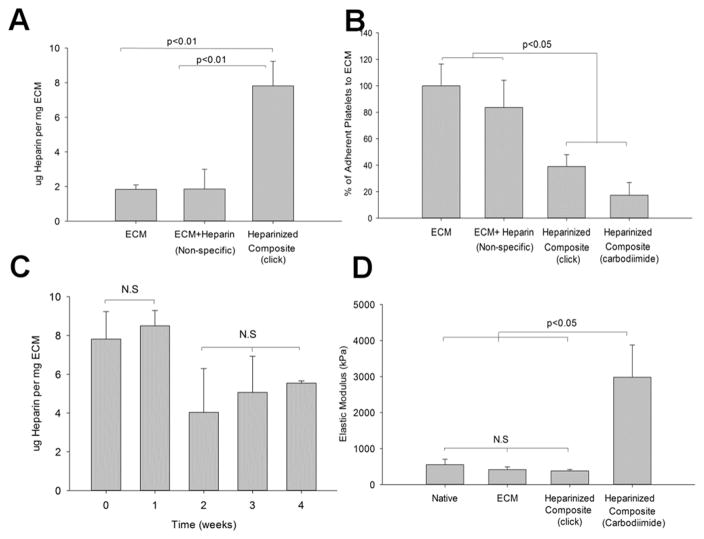Figure 3.
Characterization of mechanocompatible polymer-ECM composites after “click” chemistry. (A) Heparin quantification shows significantly higher amount of heparin present in the heparinized polymer-ECM composites relative to the ECM control and the ECM that was exposed to heparin through non-specific binding interactions. (B) Platelet adhesion is significantly reduced on heparinized polymer-ECM composites with both “click” chemistry and carbodiimide chemistry when compared to the ECM only and non-specific binding between ECM and heparin. (C) The immobilized heparin is stable at 1 week and over half of the heparin could be detected on the ECM at 4 weeks of incubation in PBS. (D) The elastic modulus of the heparinized polymer-ECM composites prepared using “click” chemistry is comparable to that of the native artery and artery ECM, as opposed to heparinized polymer-ECM composites prepared via carbodiimide chemistry. (n=3 for each study)

